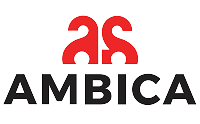STAINLESS STEEL 403
General Properties:
Type 403 has a metric density of 7.80 g/cm3. A martensitic kind of alloy, Type 403 stainless steel has lower silicon and chromium content than the type 410. It gives it apt strength, toughness and ductility leading to its use as compressor blades, rods and other turbine parts. It scores 80 on the Rockwell B scale, and it has a tensile strength of 485 MPa.
The modulus of elasticity lies in between 190-210 GPa. Type 403 has a specific heat capacity of 0.460 J/g-°C. In comparison to the austenitic 300 series, the Grade 403 is overall high on-resistance, but it is not as resistant to corrosion and oxidation as the 300 series. This alloy is also prone to rust under specific conditions. It is also magnetic by property.
The stainless steel type 403 bar is available in many shapes- round, rectangular, square, flat, billet, hex and custom shapes. It is used, for steam turbine buckets, valves and bucket covers, blades, pump parts, nuclear reactor control, gas turbine compressor, fasteners, shafting.
Chemical Composition:
Stainless Steel type 403, grade 1.4003 has the following proportion of chemicals- Carbon- 0.15, Manganese- 1, Phosphorus- 0.040, Sulfur- 0.030, Silicon- 0.50 and Chromium- 12.3, Fe- 86%.
Forging:
This metal can be, easily forged both headed or upset. It requires more weight to be forged and therefore, the hammer required for it is heavy. It also requires more blows compared to mild steel. The right temperature for its forging is 2000°F/2200°F (1095°C/1205°C). The correct temperature among the range depends on the deformation.
Post the deformation; it is forged and then air-cooled. If the forging is huge, then it has to be cooled in the furnace or by using dry lime. This type of steel should not be, forged below 1650°F (900°C).
Heat Treatment:
Annealing: All the parts of alloy should be heated uniformly. The correct temperature lies between 1200°F (650°C) and 1400°F (760°C). After heating it to the given temperatures, it is air-cooled. It becomes an important step for its machinability as well.
If the metal is annealed, at a lower temperature, it gives it an optimum hardness for the machinability. If softening is required, the temperature is raised to 1500°F/1650°F (815°C/900°C). It is followed by cooling slowly at the furnace. It gives it 155 BHN. Softness is often required, for cold forming and cold heading.
Hardening: Unlike the 300 stainless steel series, type 403 can be hardened, with heat treatment. It can be attributed to the 11% increase in Chromium and a 1% increase in Manganese when compared to the 300 series.
The hardening will transform the microstructure of the material. However, the extent of hardness depends on the carbon content of the particular material. With this step, the heat elevates the hardness of Grade 403.
Tempering: Tempering completely depends upon the mechanical properties that are being, expected out of the steel. It has to be immersed into water, for at least an hour or two. For larger chunks, it has to be soaked for more time followed by air-cooling. The consequence on the metal is as follows:
If the metal is, tempered between the range of 750°F (400°C) and 1050°F (565°C), this will decrease the strength and corrosion resistance. It is based on the medium circumstances. If this the required strength and ductility, it can be tempered, in this way. But the corrosion resistance might be reduced in this case.
Machinability: Type 403 stainless steel is durable, hard and strong even in its softest condition. Therefore, it can be transformed into tough chips and maintain durability wherever they are, used. It builds upon tools. The heat-treated condition or the drawing in the cold working process can be, used to obtain a better finish. Its material can be machined up to Rc 35 to ensure higher mechanical properties.
Weldability: For welding type 403, the required part must be preheated, at 350/400ºF (180/205ºC). It prevents any cracking that can occur in heavy sections. Annealing is an important step that must be done right after welding as the alloy is air hardening.
Applications of Type 403:
In compressor blades: Type 403 retains its strength even at extremely high temperatures and is ideal for being used in compressor blades. The industry requires a corrosion-resistant material, which makes this alloy a suitable choice.
Automobile exhausts: Type 403 has high-temperature characteristics. The high corrosion resistance specific to rust ensures clean exhaust gases that contribute to the social responsibility of an individual.
Bucket covers: With its convenient flexibility to adapt into a tapered shape, type 403 contributes to the ease of pouring, collecting and cleaning. It also helps in sterilization as it is corrosion-resistant. Moreover, these covers are very reliable and durable as the hardness of type 403 reduces the chances of any damage.
Turbine engines: The power generation industry has to be very careful in choosing the material involved. Type 403 is a good choice as it sustains extreme heat, is resistant to corrosion and maintains its strength.

